Optics
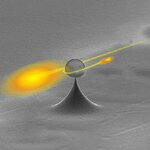
Researchers have managed to 'pluck' a single photon, one particle of light, out of a pulse of light.
The researchers set out to demonstrate a scheme for pulling just one photon out of a stream, on demand. Their mechanism relies on a physical effect that they call single-photon Raman interaction, or SPRINT, which is based on a single atom, or atom-like system.
"The advantage of SPRINT," says Dr. Barak Dayan, head of the Weizmann Institute Quantum Optics group, "is that it is completely passive -- it does not require any control fields, just the interaction between the atom and the…
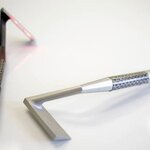
Since their first use in the 1960s, there has been a tremendous expansion of laser technology into an impressively wide range of uses, from fundamental science, health care and security to entertainment. Since Theodore Maiman’s first working laser at the Hughes Research Laboratory in 1960 more than 55,000 patents on laser technology have been filed in the United States alone.
It’s always dangerous to make any definite statement about the potential future for some new idea or invention, since we’re not able to predict the future: notoriously (and probably apocryphally) Thomas Watson of IBM…
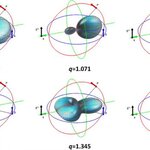
In several years - in perhaps decades, or maybe never - our computers, nanoantennas and other kinds of equipment could operate on the base of photons, rather than electrons. Even now we are practically prepared to accomplish this switch. If it happens, the spheres studied by an international group of Russian, French and Spanish scientists will definitely be able to become one of the elementary components of new photonic devices.
The potentialities of the conventional electronic computers are going to be exhausted. During last four decades, Moore's law (according to which computer's processor…
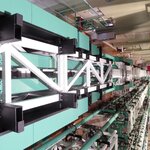
The Institute of Laser Engineering (ILE), Osaka University, has succeeded to reinforce the Petawatt [3] laser "LFEX" to deliver up to 2,000 trillion watts in the duration of one trillionth of one second (this corresponds to 1000 times the integrated electric power consumed in the world). By using this high-power laser, it is now possible to generate all of the high-energy quantum beams (electrons, ions, gamma ray, neutron, positron).
Owing to such quantum beams with large current, we can make a big step forward not only for creating new fundamental technologies such as medical applications…

By Rebecca Boyle, Inside Science -- When light bulbs colonize our homes, humans get much less sleep.
It's an intuitive idea, but a new study measures this effect in a real-life situation for the first time by examining hunter-gatherers in Argentina.
Communities with access to electric lighting have shifted their bedtimes to later in the evening, curtailing a normal night of shuteye.
"When you have access to electricity, you can decide when you turn the lights off, and that resets your biological clock," said Horacio de la Iglesia, a biologist at the University of Washington, in Seattle, who…
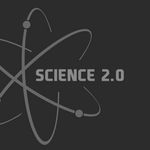
Scientists have developed the first liquid nanoscale laser and it's tunable in real time, meaning you can quickly and simply produce different colors, a unique and useful feature. The laser technology could lead to practical applications, such as a new form of a "lab on a chip" for medical diagnostics.The laser's color can be changed in real time when the liquid dye in the microfluidic channel above the laser's cavity is changed.
The laser's cavity is made up of an array of reflective gold nanoparticles, where the light is concentrated around each nanoparticle and then amplified. (In contrast…

In a recent study, scientists have presented a new technique that significantly reduces the halo effect that is generated when using multi-focal. contact and intra-ocular, lenses and looking at bright point sources in dark conditions.
Presbyopia is a result of natural aging and stems from a gradual thickening and decrease in elasticity of the lens inside the eye. Corrective lenses used to address presbyopia often lead to a halo effect. This is basically a glow or color light pattern observed when looking at a bright source of light in front of a dark background.
It is mostly experienced at…
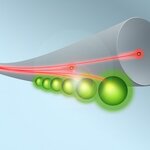
Light is a useful tool for quantum communication, but it has one major disadvantage - it travels at the speed of light and sometimes things need to be kept in place, or at least slowed down.
Like with trains all sharing a track, you can't have one express line with no brakes for very long.
A team researchers has demonstrated they can put the brakes on light, and not in some arcane quantum system but rather in glass fiber networks we are already using today. By coupling atoms to glass fibers light was slowed down to train speed - 90 miles per hour - and they even managed to bring the…
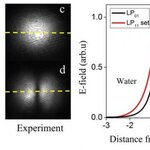
Most people don't realize that light can take different shapes. In the fundamental mode, light energy is most intense at the center and gradually fades towards the edge of the beam.
Light also has higher order modes. For example, the energy pattern can look like a donut, with most of the energy contained in a ring, and none in the hole or middle. Scientists create higher order modes by shining light through crystals and in recent years passing light along optical microfibers or nanofibers to manipulate particles has gained popularity in research labs because it could some day…

Modern life and inadequate exposure to natural light during the day combined with overexposure to artificial light at night is believed by some to be harmful to the body's natural sleep/wake cycle.
One of those who contends so is University of Connecticut cancer epidemiologist Richard Stevens. "It's become clear that typical lighting is affecting our physiology. But lighting can be improved. We're learning that better lighting can reduce these physiological effects. By that we mean dimmer and longer wavelengths in the evening, and avoiding the bright blue of e-readers, tablets and smart…